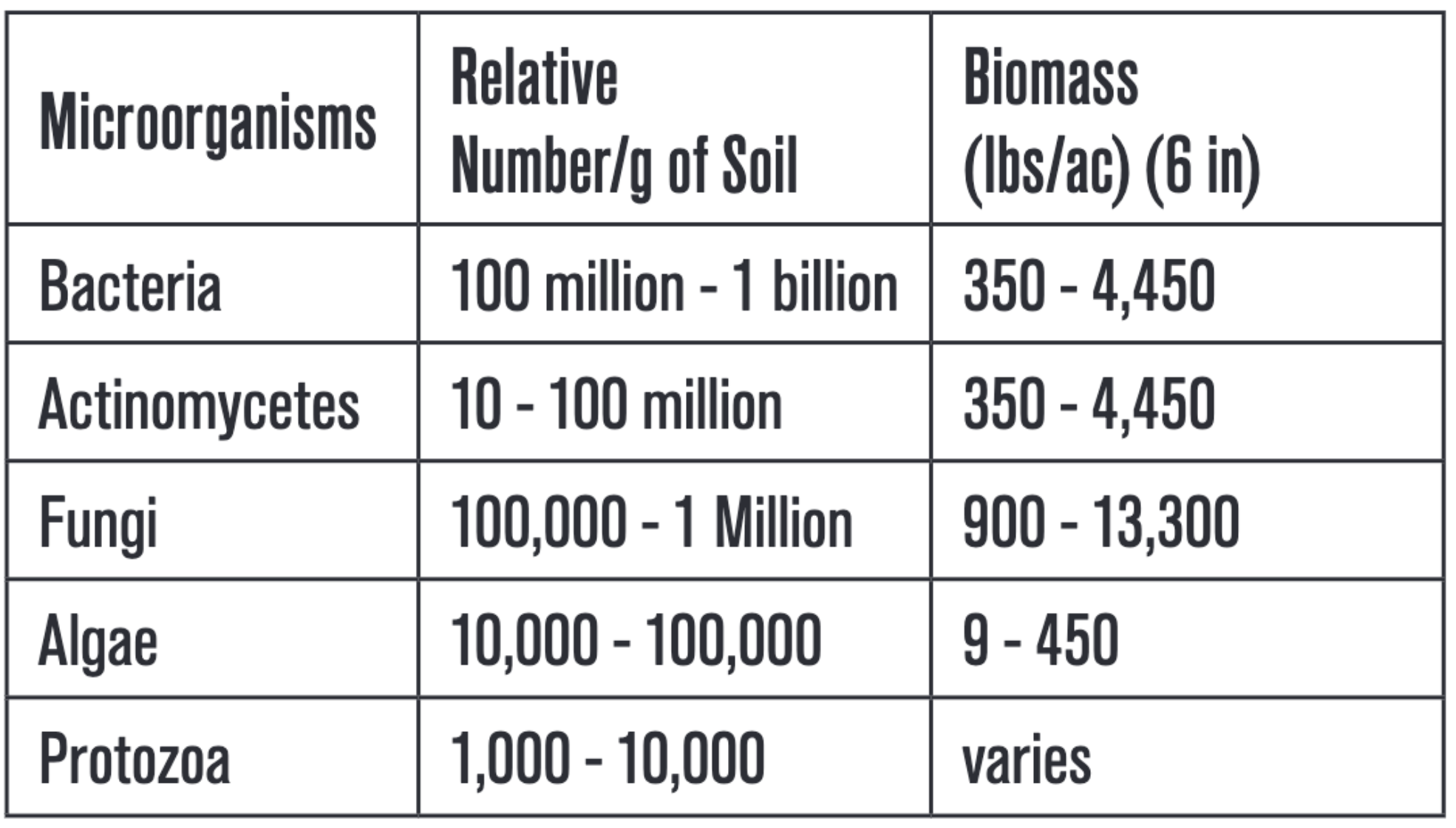Roles of Bacteria in the Soil
There are many categories of bacteria, such as decomposers, mutualists, nitrogen fixers, nitrifying, denitrifying, and lithotrophs, that are primarily nutrient cyclers, while other groups like pathogenic bacteria act as probiotics for plants which help them stay healthy². Many actinomycetes and other bacteria have a direct influence on phosphorus availability in soil. Bacillus licheniformiscan increase fertilizer efficiency in phosphorus and potassium, while Bacillus subtilis affects phosphorus solubilization, plant health, and can also enhance nitrogen fixation³.
Tillage and Soil Bacteria
Management practices such as tillage can have a major influence on soil bacteria populations. When soil is tilled, actinomycetes die and release a product called “geosmin” into the air that produces the unique aroma that is present during and after tillage. Bacteria that are part of the decomposer group then rapidly increase in population and thrive in tilled soils because carbon and oxygen are plentiful. This group of bacteria often leave behind many waste compounds and typically convert 30% or less of the carbon compounds that are ingested into stable forms of carbon. Many of these compounds (70% or more) are released as a byproduct in the form of CO2.¹
Converting Nitrogen
Nitrogen fixing bacteria, known as diazotrophs, possess the nitrogenase enzyme which allows them to process N from the atmosphere into a form that plants can use. Three of these bacteria: Azotobacter, Azospirillum, and Clostridium, live freely in the soil and are not directly hosted on plants. These three bacteria are limited in the capacity to fix nitrogen and are a small percentage of the microbial population.
Symbiotic Relationship
Other nitrogen fixing bacteria can form symbiotic relationships with plants. Rhizobia may be the most well-known bacteria in agriculture because of its ability to fix nitrogen. While known as an inoculant that can be added to the seed or soil for legumes, Rhizobia is naturally present in the nodules of legumes. Through a symbiotic relationship, the plant supplies sugars to the Rhizobia, and in turn, the bacteria supply various forms of nitrate, nitrite, ammonia, or ammonium to the plant. Like most soil bacteria, Rhizobia function best in neutral to basic soils (pH ≥ 7). Low soil pH can cause a significant reduction in nodule formation or function, thereby causing a significant reduction in plant available nutrition.

The Nitrogen Cycle
Figure 1: The Nitrogen Cycle⁴
Nitrogen Cycle
The nitrogen cycle relies on many of the bacteria found in the nitrifying and denitrifying bacteria groups in Figure 1. Nitrite bacteria convert ammonium to nitrite, and then nitrate bacteria convert nitrites to nitrates, which plants can take up and use. Denitrifying bacteria do the inverse, allowing nitrate to be converted to nitrous oxide or atmospheric nitrogen when soils lack oxygen (anaerobic), such as when soils are flooded, or water saturated.
Soil Environment
As the diversity of plants being grown in the soil increases, microbial diversity also increases. The addition of biological products with the application of other agricultural inputs can also promote soil bacterial diversity. These products can help to introduce new populations or expedite the repopulation of biological communities after environmental stress has caused a decline in numbers, such as after tillage or anhydrous ammonia application, after soil fumigant use, or after soil has frozen. Bacteria can be very sensitive to the environment around them, and while hot and/or dry conditions may limit bacterial reproduction and function, when environmental conditions such as temperature and moisture are correct, some bacteria can reproduce in as little as 30 minutes.
Conclusion
Bacteria play a vital role in agriculture and can influence nutrient availability. When a grower analyzes the value of a microbial product in their cropping system, it is important to understand the type of microorganism that will be introduced, its ability to proliferate in the soil, affects on existing microbial diversity and overall desired outcome. Incorporating biological products to complement a balanced crop nutrition program can offer additional tangible and non-tangible benefits to move a farm into an advanced crop nutrition strategy.
References:
Horman, J. and Islam, R 2010. Understanding Soil Microbes and Nutrient Recycling. Ohio State Extension
Horman, J. Role of Soil Bacteria. Ohio State Extension
Hashem A. and Tabassum, B. and Elsayed Fathi Abd Allah. Bacillus subtilis: A plant-growth promoting rhizobacterium that also impacts biotic stress. National Library of Medicine.
Dréo, J. The Nitrogen Cycle
